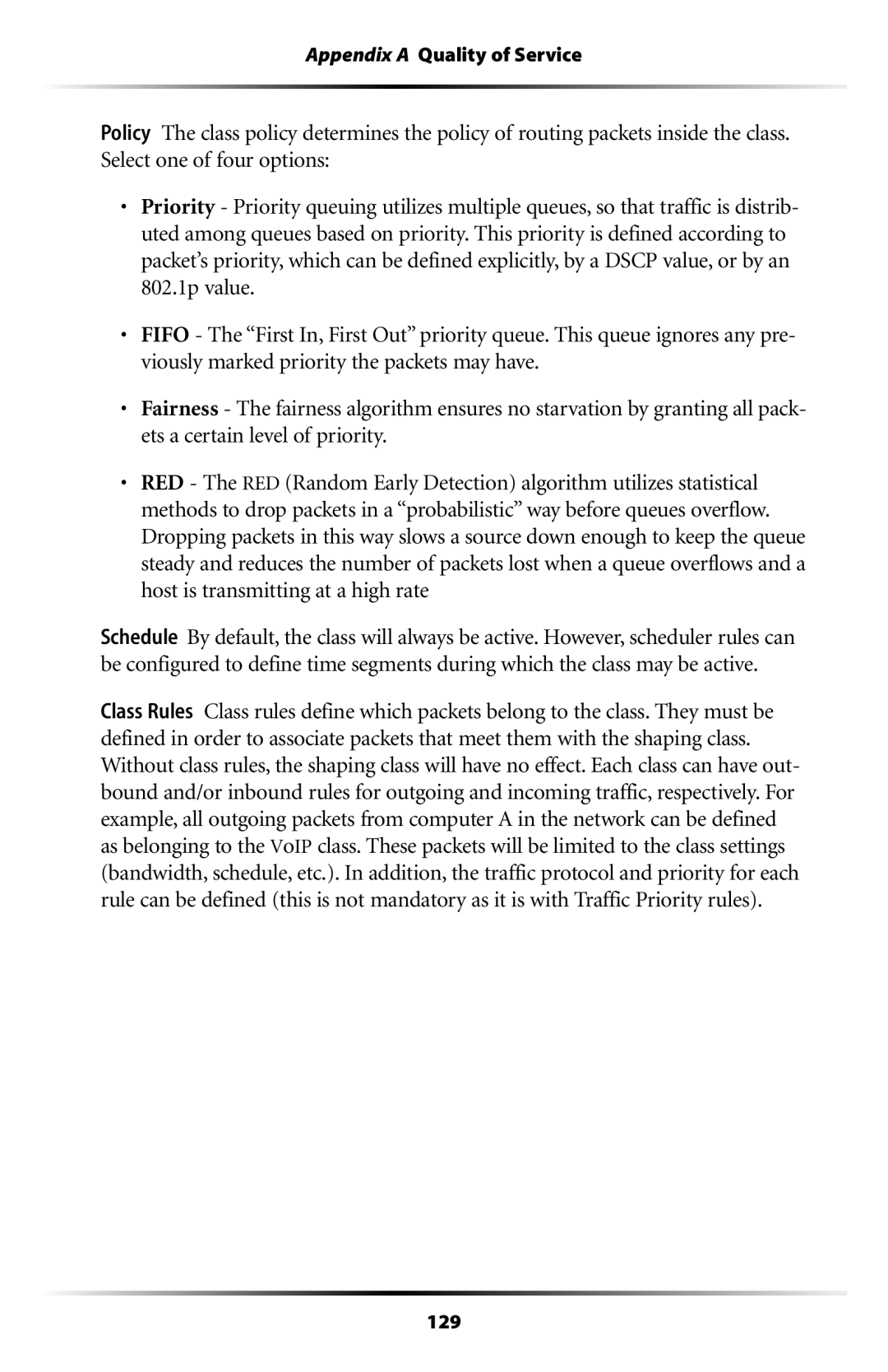
Appendix A Quality of Service
Policy The class policy determines the policy of routing packets inside the class. Select one of four options:
•Priority - Priority queuing utilizes multiple queues, so that traffic is distrib- uted among queues based on priority. This priority is defined according to packet’s priority, which can be defined explicitly, by a DSCP value, or by an 802.1p value.
•FIFO - The “First In, First Out” priority queue. This queue ignores any pre- viously marked priority the packets may have.
•Fairness - The fairness algorithm ensures no starvation by granting all pack- ets a certain level of priority.
•RED - The RED (Random Early Detection) algorithm utilizes statistical methods to drop packets in a “probabilistic” way before queues overflow. Dropping packets in this way slows a source down enough to keep the queue steady and reduces the number of packets lost when a queue overflows and a host is transmitting at a high rate
Schedule By default, the class will always be active. However, scheduler rules can be configured to define time segments during which the class may be active.
Class Rules Class rules define which packets belong to the class. They must be defined in order to associate packets that meet them with the shaping class. Without class rules, the shaping class will have no effect. Each class can have out- bound and/or inbound rules for outgoing and incoming traffic, respectively. For example, all outgoing packets from computer A in the network can be defined as belonging to the VoIP class. These packets will be limited to the class settings (bandwidth, schedule, etc.). In addition, the traffic protocol and priority for each rule can be defined (this is not mandatory as it is with Traffic Priority rules).
